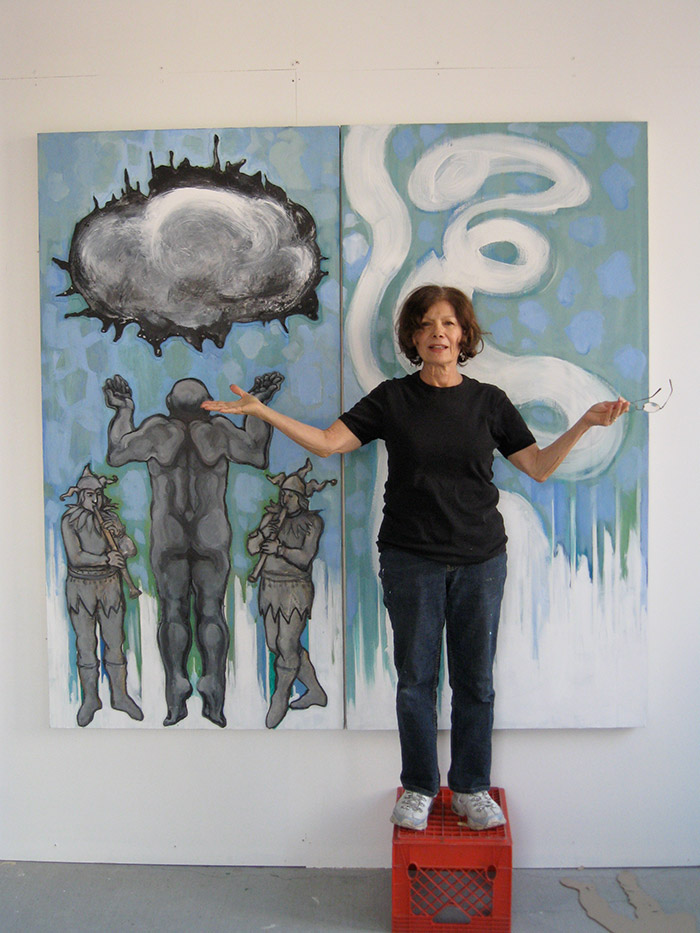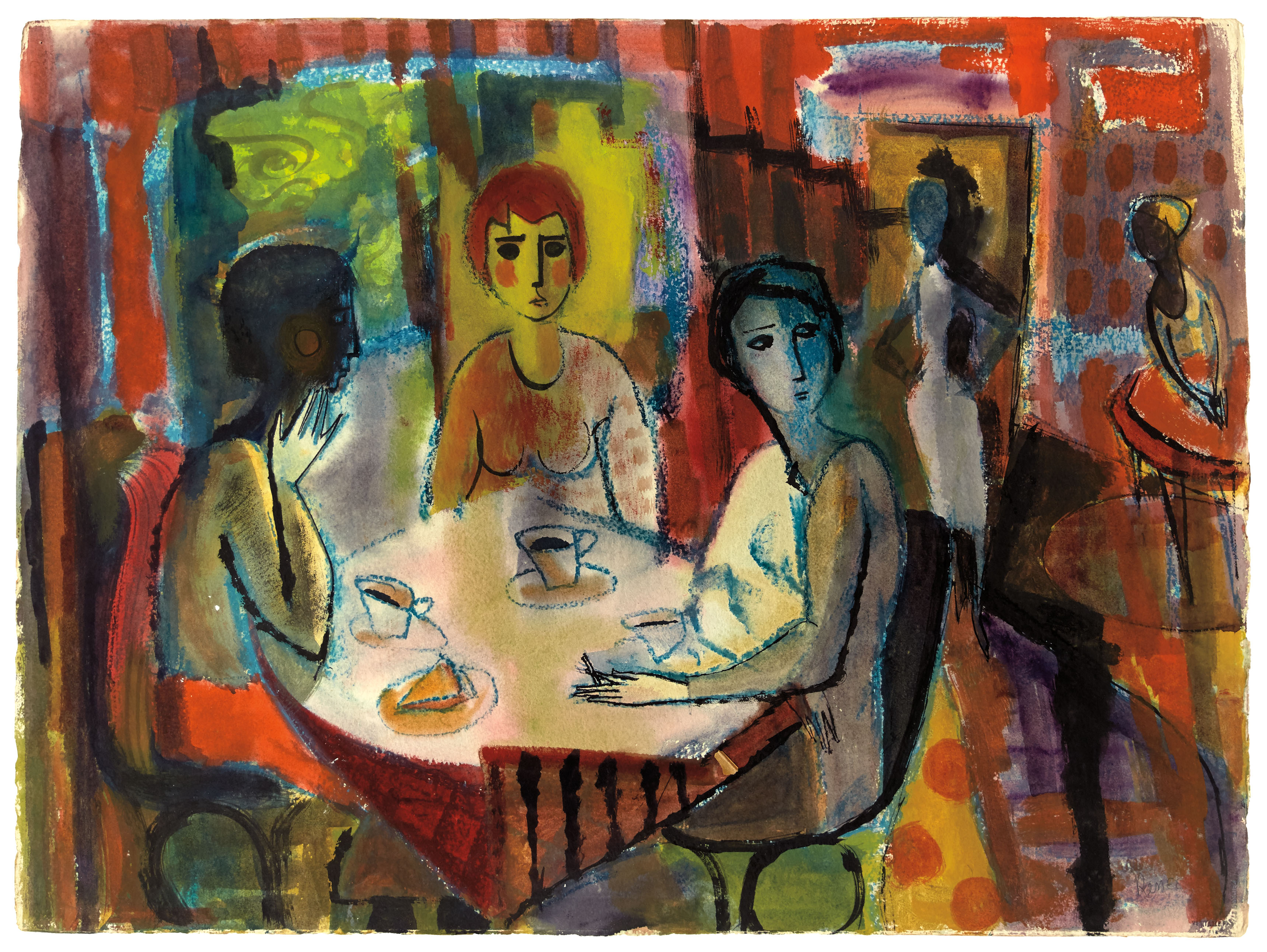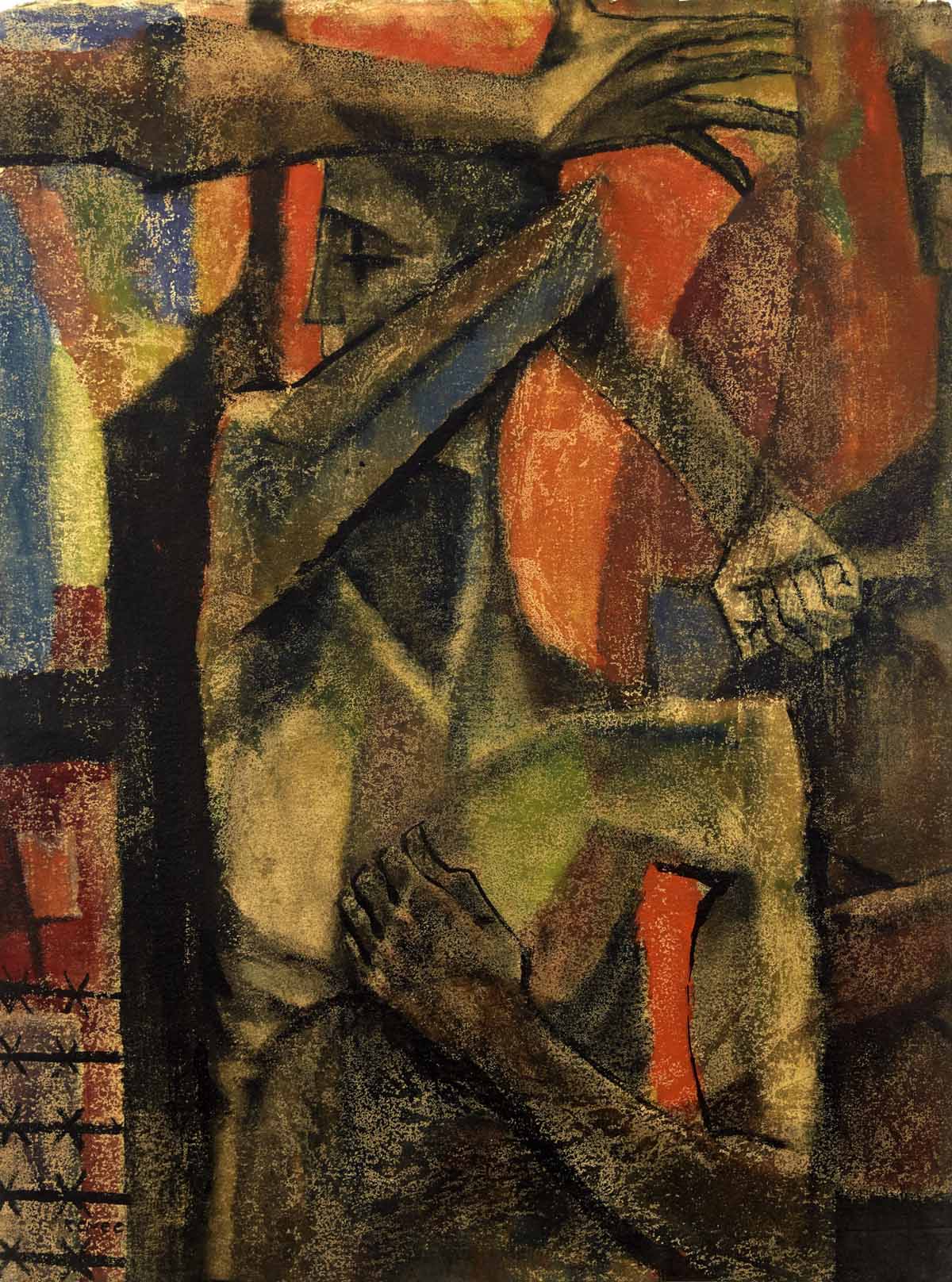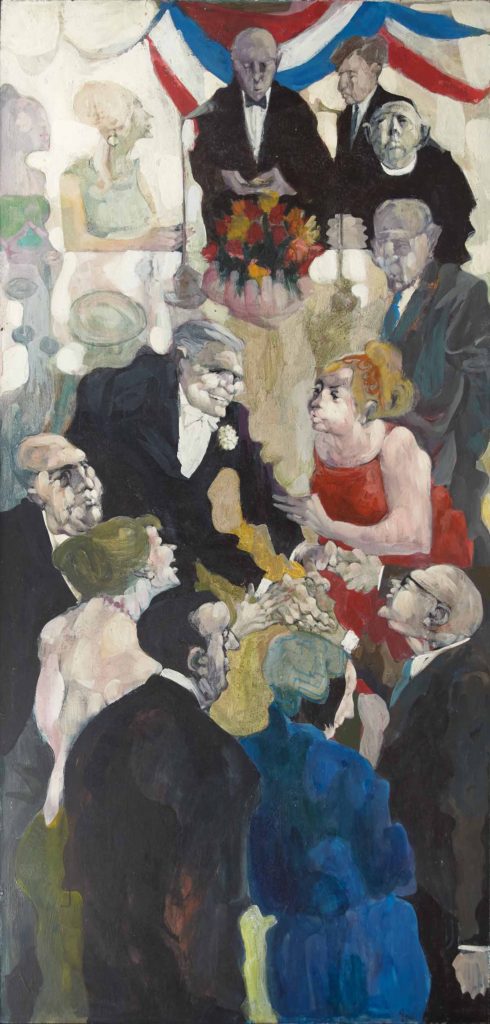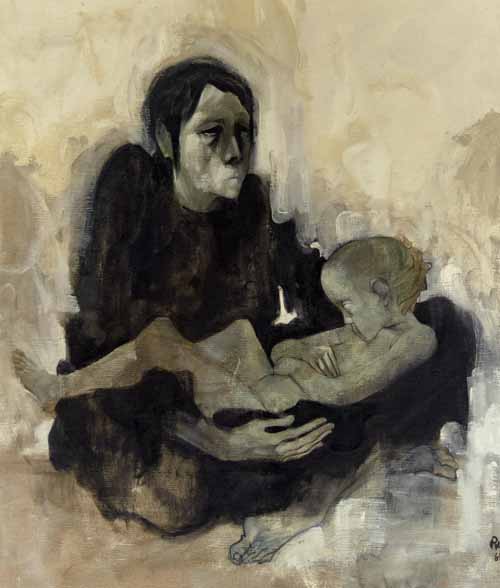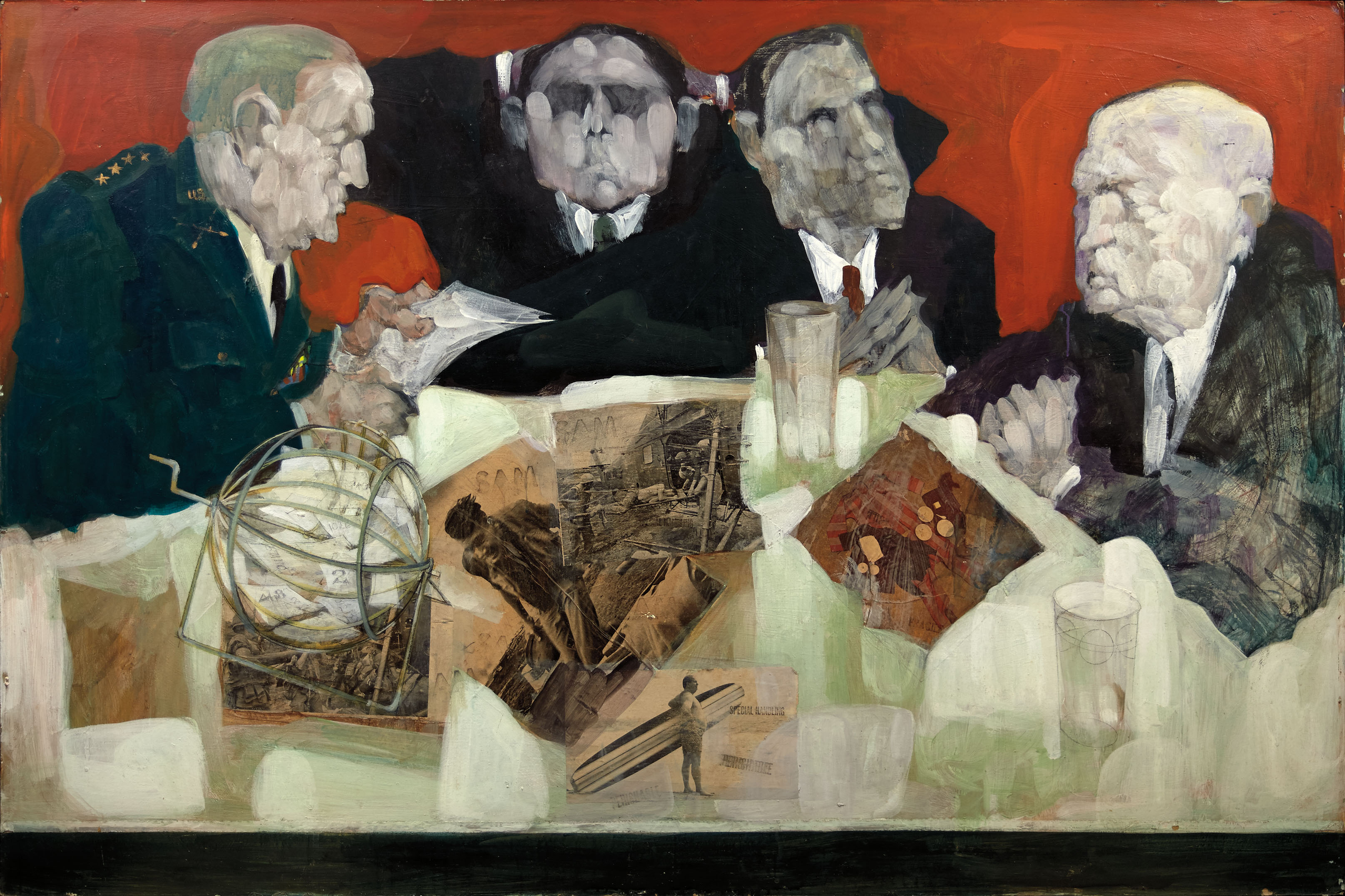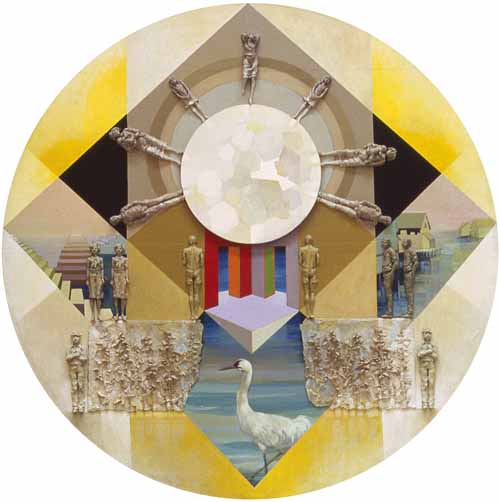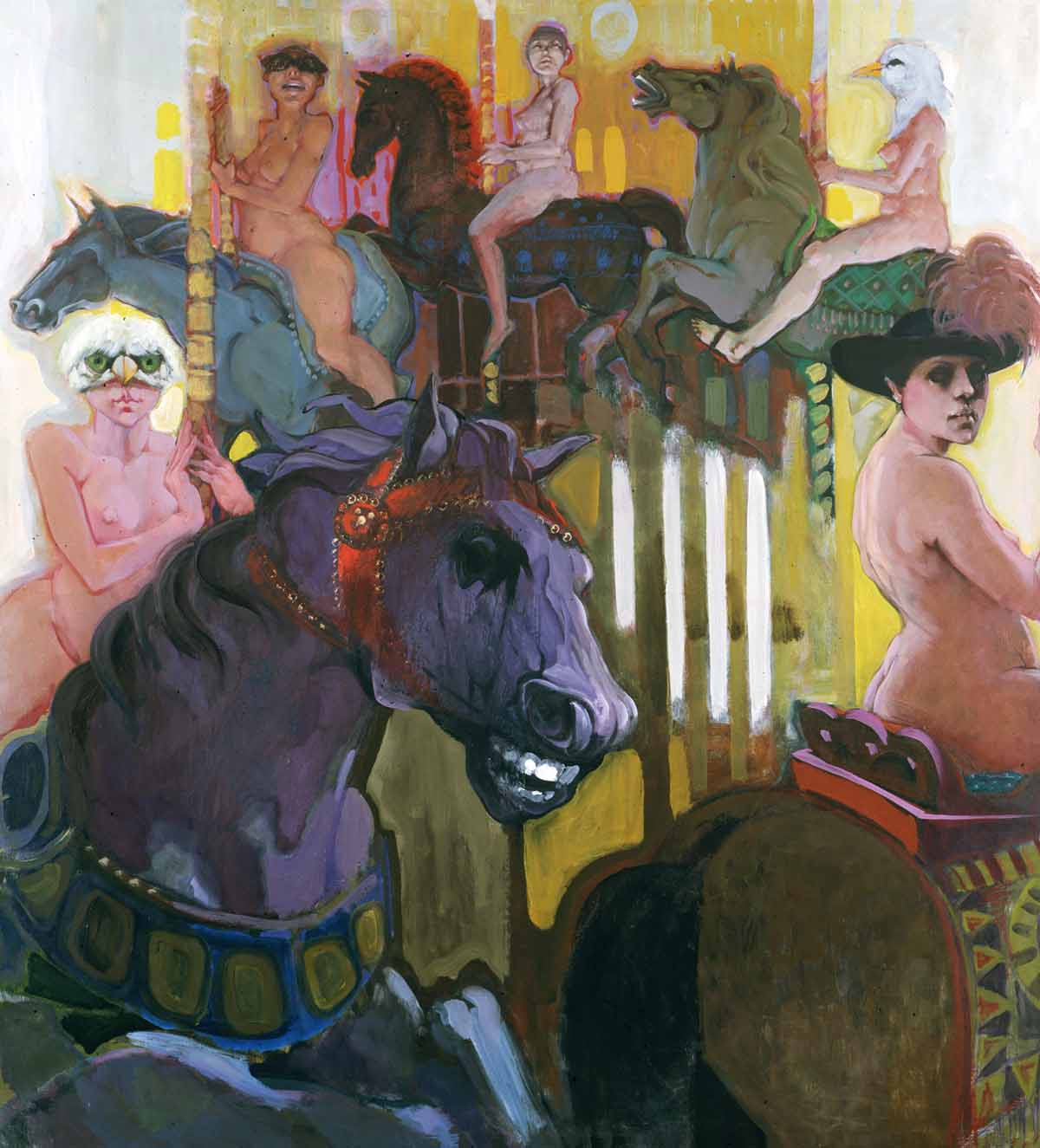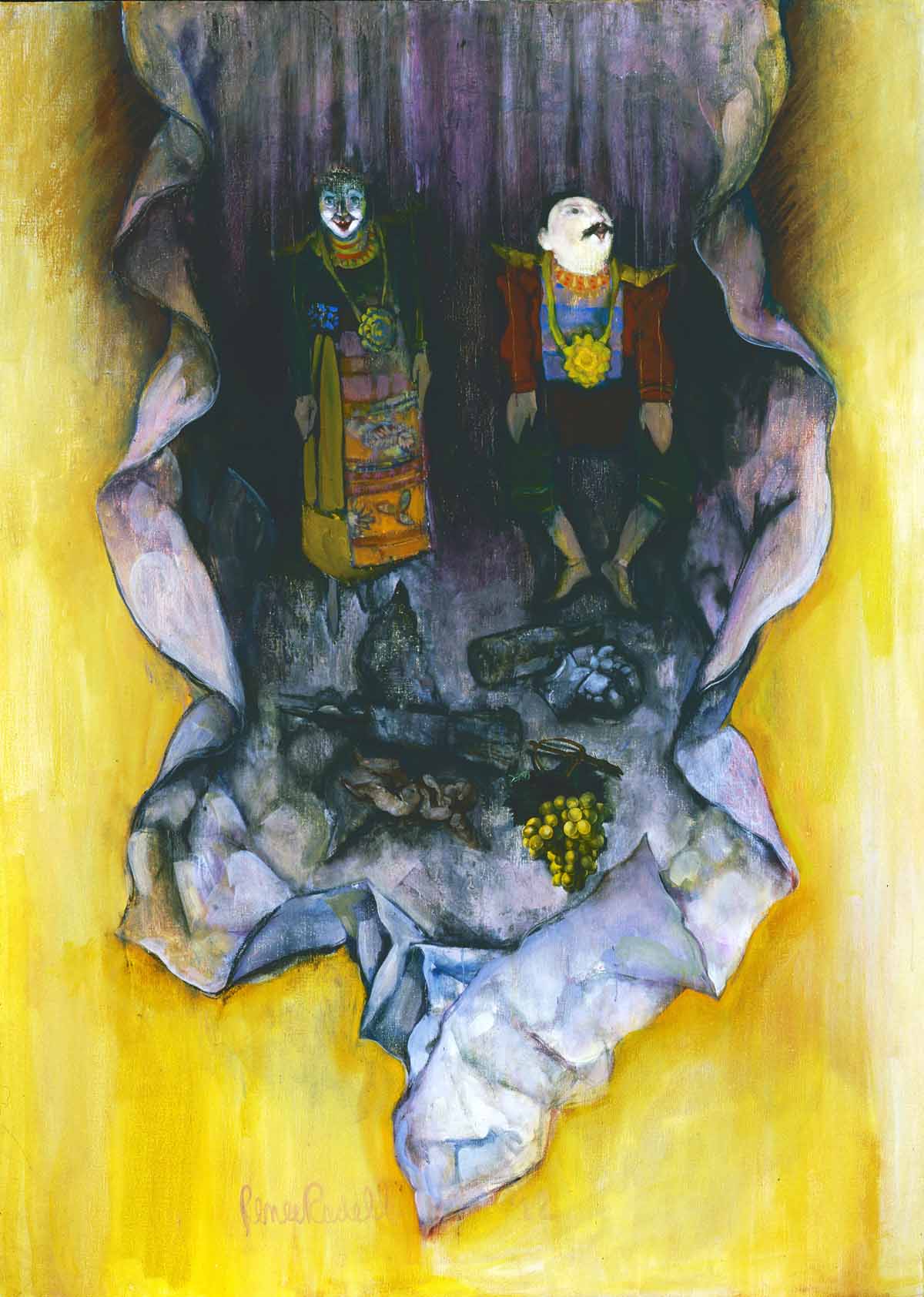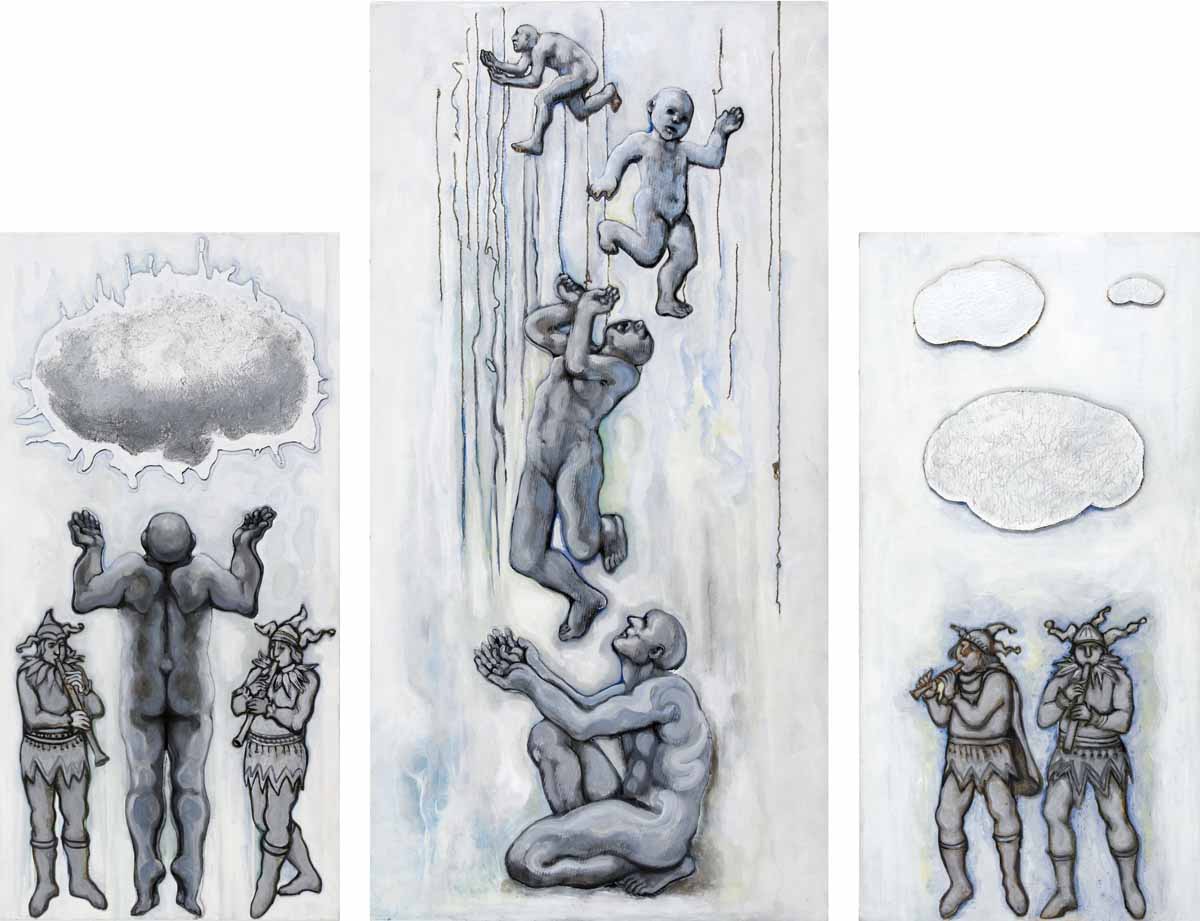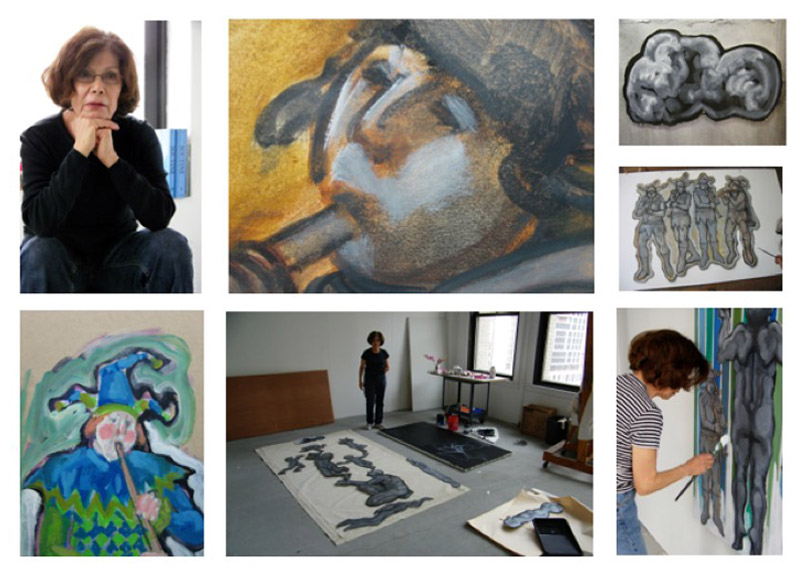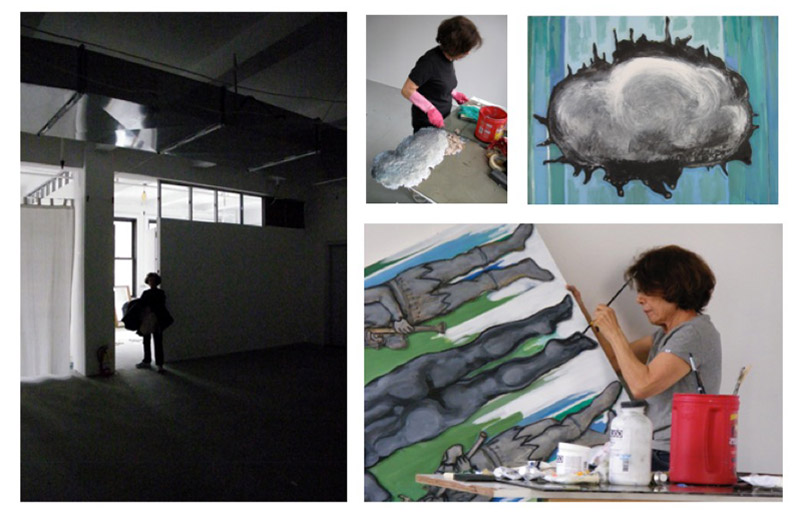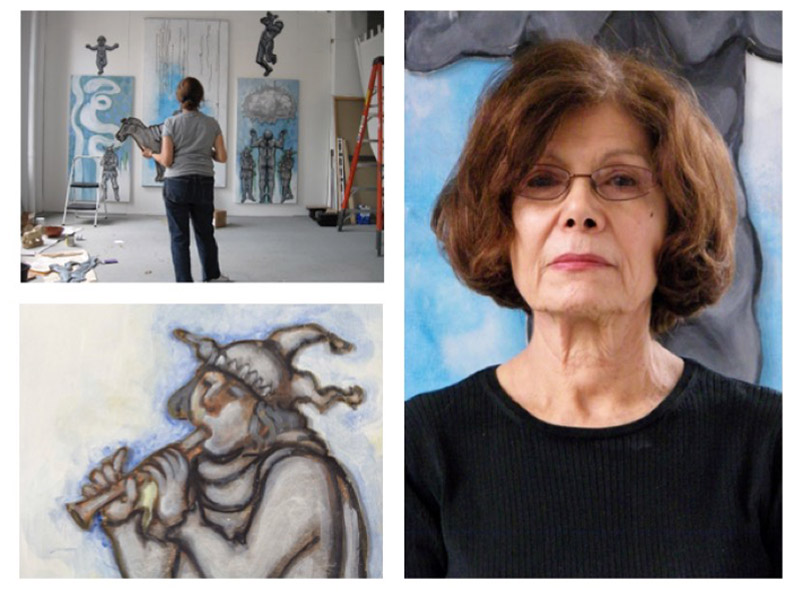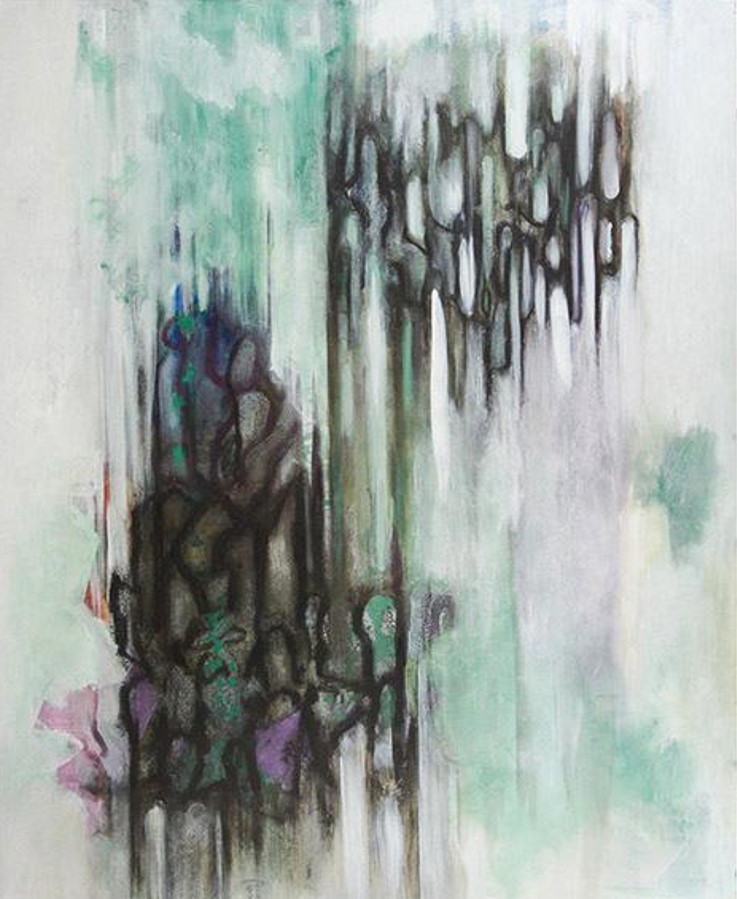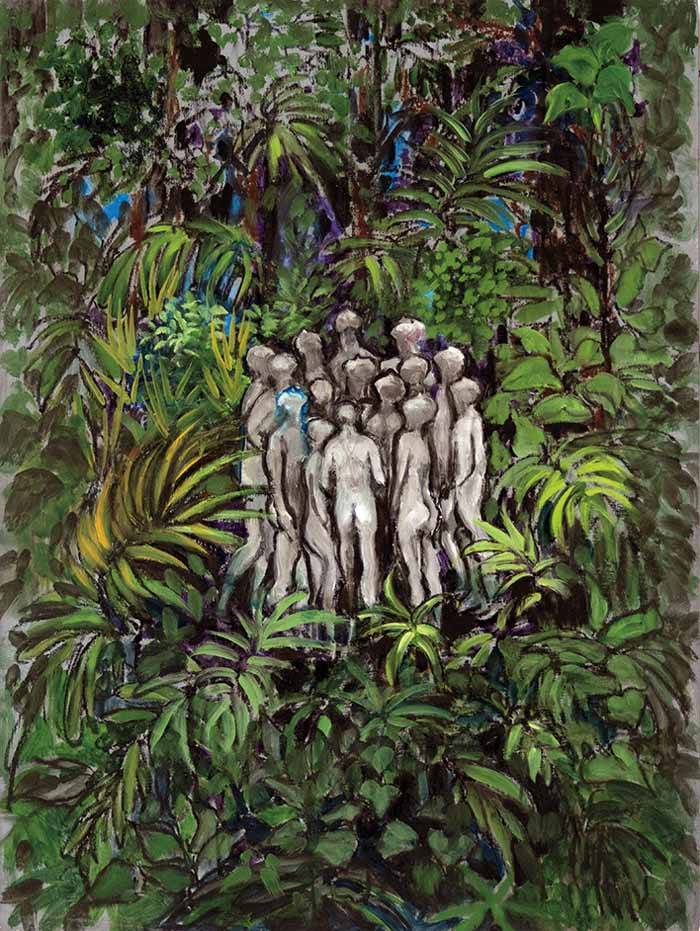In the 1960s, Renee Radell emerged in the mainstream gallery scene of New York as a pioneering American woman social commentary painter. Her art was a new form of Social Realism, as pioneered earlier by such American artists as Ben Shahn and Jack Levine.. Her sociopolitical imagery was charged with a painterly version of protest art and political satire.
Five solo art shows in Manhattan, featuring paintings such as The Tide and Political Fertility Rite, incited critical acclaim in the major art press at home and in Europe. Her sociopolitical suggestions, deftly stated with signature brushstrokes and visceral impact, struck a chord among the intellectual avant-garde during a time of turbulent change. This discovery of creativity was all the more remarkable within the context of developments in the art world. At the same time, Pop Art and Minimalism were new darlings in the art world. American Contemporary Art was doing a victory lap with second generation Abstract Expressionism.
By the 1970s, the Vietnam War stage was imploding and domestic politics had grown ugly. During this period, Renee Radell took no prisoners in her passionate attacks on the injustices inherent in war and the inequalities within the very sociopolitical system shaping the American Dream.
Simultaneously, Americana and family became recurring themes in her artwork, reflecting a personal dimension of respect for traditional values. Then a mother of five children, the artist’s circumstance suggested a respite as Artist in Resident at Mercy College of Detroit.
Although Renee Radell has an exceptional level of fortitude and her withdrawal from New York was temporary, it supports the thesis of art historian Linda Nochlin about the challenges “great women artists” often face.
To illustrate, in Renee Radell Web of Circumstance, author Eleanor Heartney writes:
“Why have there been no great women artists? Art historian Linda Nochlin asked this question in a now famous article in Artnews magazine in 1971. Nochlin’s query was meant as a provocation. Herself a well known feminist, she intended to demonstrate, not that there were no great women artists, but that throughout history, women artists had been faced with circumstances – among them, the demands of child rearing, lack of access to art education, and ingrained cultural beliefs about women’s creative and intellectual inferiority– that inevitably limited their access to the support system that made male ‘greatness’ possible.”




